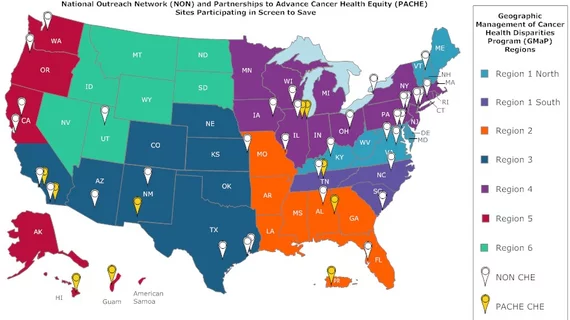NCI targets colorectal screening in low access areas
The National Cancer Institute has launched a program called Screen to Save in response to recommendations made by the Cancer Moonshot’s Blue Ribbon Panel. The program aims to increase colon cancer screening rates among men and women in diverse and rural communities across the country.
Minorities and those living in rural areas still lag behind other groups in colorectal cancer (CRC) screening efficacy, representing a clear opportunity to increase detection of CRC by knocking down educational or access barriers.
While nationwide mortality rates of CRC declined by 35 percent since 1980, certain areas continued to have high rates of CRC deaths, according to a 2016 study by the Institute for Health Metrics and Evaluation at the University of Washington, Seattle.
Colon cancer mortality rates had some of the largest absolute differences between counties, indicating a lack of access to screening for a relatively preventable disease. Areas with the highest mortality rates include the lower Mississippi River Delta, Southern Alabama, and along the border of West Virginia and Kentucky.
To correct these disparities, community health educators funded by the National Cancer Institute’s (NCI) National Outreach Network and Partnerships to Advance Cancer Health Equity will provide tailored educational materials about CRC screening benefits and local resources to diverse and rural communities across the U.S.
The Geographic Management of Cancer Health Disparities Program’s Regional Coordinating Directors will assist and coordinate the information rollout across regions, identifying areas where NCI efforts will have the biggest impact. Otherwise known as GMAP, the program brings together investigators, public health experts, and community members to share information, tools, and strengthen community education. Screen to Save takes advantage of the relationships already in place to maximize impact while minimizing time and financial costs.
In addition to Colon Cancer Awareness Month, educational outreach programs will take place throughout the year, with regular assessments to monitor their effectiveness.
For a full list of participating hospitals with Community Health Educators, please visit the Screen to Save webpage.
